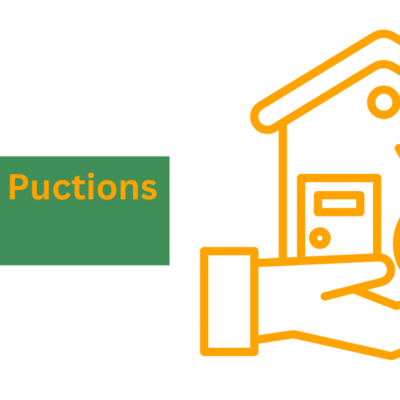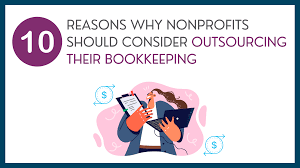When a raw material delay throws off your entire production schedule—or a transport strike leaves your delivery trucks idle—you don’t just lose time. You lose money, momentum, and sometimes, client trust. But imagine having a system that already predicted that risk, assigned roles, and gave your team a roadmap to stay functional. That’s the quiet, powerful promise of ISO 22301 certification—a business continuity framework that keeps you steady when things go sideways.
Let’s talk about what it actually is, how it works in the real world, and why companies across manufacturing, logistics, and supply chains are getting serious about it.
What Exactly Is ISO 22301 Certification?
In simple terms, ISO 22301 certification proves that your business has a reliable, documented, and tested system for staying operational during disruptions.
Unlike those buzzword-heavy corporate posters or dusty manuals no one ever reads, this certification isn’t about looking good—it’s about working smart under pressure. It’s a structured process, audited by a third party, that assesses your ability to respond to and recover from interruptions.
And no, it’s not just for big multinationals. In fact, it’s often the mid-sized factories, regional logistics hubs, and independent distributors that benefit the most.
Why Manufacturers and Logistics Teams Should Care
Let’s be blunt: everything in your business depends on flow. Break that flow—and chaos follows.
Here’s the thing. Whether you’re making automotive parts in Bhiwadi or managing freight out of Delhi NCR, you don’t get a warning before disruptions hit. ISO 22301 certification means that when those things happen—and they will—your team already has a working Plan B.
You don’t fumble around. You follow the plan. Operations don’t stop—they adapt.
How ISO 22301 Certification Works in Practice
Let’s take the jargon out of it.
You start by figuring out what could realistically go wrong—this is your business impact analysis. Then you draft your business continuity plan: steps your team would take if those things happened. After that, you test it. Maybe not with a full-blown simulation at first—maybe just a dry run during a team meeting. Then you adjust the plan, run it again, get everyone familiar.
Once you’ve built that rhythm, a certification body audits the process. They’re not looking for flashy presentations. They’re looking for clarity, accountability, and consistency.
When they see that you’ve put real effort into keeping your business running under stress, you earn your ISO 22301 certification.
A Real-World Example That’s All Too Common
Let’s say you’re a textile manufacturer. It’s the rainy season. Your warehouse is on slightly low ground, and surprise—it starts flooding. A few years ago, that would’ve meant production halt, damaged inventory, and endless “we’re sorry” calls to clients.
But now? Your flood checklist kicks in. Workers move stock to the second floor. Dispatch is rerouted through a partner facility. Your team sends out auto-notifications to customers using a pre-approved SMS template. You lose a few hours, sure—but not the whole week.
That’s ISO 22301 certification in motion. Not some dusty binder. A living, breathing part of your operations.
The Not-So-Obvious Wins of Certification
You know what’s underrated? Confidence.
When your team knows there’s a plan, they don’t freeze in panic. They move. When your clients hear you’re ISO 22301 certified, they don’t second-guess your reliability. They trust you more. Sometimes, they’ll choose your bid over someone else’s just because you’ve proven you can handle pressure.
You might even qualify for bigger contracts. Public sector projects, multinationals, and large OEMs often require ISO 22301 certification before they even talk business. It becomes more than a document—it becomes a silent deal-maker.
ISO 22301 Isn’t Just a Certificate—It’s a Culture Shift
Here’s something people don’t say enough: ISO 22301 certification changes how your team thinks.
Instead of scrambling when a vendor fails, they say, “What’s our fallback?” Instead of reacting to data loss, they already know where the backups live. Over time, your factory, warehouse, or logistics center becomes a smarter, calmer place. Less noise. More problem-solving.
And honestly, that kind of shift spreads. New hires pick it up. Suppliers see it. Clients notice it. It creates a subtle but serious professional vibe. One where people feel safe, informed, and capable—even when things go wrong.
Tools That Make It Easier (You Might Already Be Using Some)
Think ISO 22301 certification requires some fancy software system? Not at all.
You can start with:
- Google Sheets to track suppliers, alternates, and risk levels
- WhatsApp groups for incident alerts and real-time communication
- Trello boards to manage your continuity plans and assign owners
- Shared calendars for review cycles and team drills
- Simple SMS automation tools for emergency client updates
Eventually, you might scale up. Tools like Fusion Risk Management, Resolver, or even industry-specific software can help. But the tech isn’t the point—the readiness is.
Getting Started Doesn’t Have to Be Complicated
Start small. Maybe today, just list out five “what-if” scenarios with your team.
That’s it. That’s your starting point toward ISO 22301 certification.
From there, assign roles. Create templates. Test your plan. Adjust. Over a few months, you’ll have a continuity system that isn’t just theory—it’s tested, familiar, and trusted.
Then you bring in a certification body. They review your process, interview your team, and check your documentation. And if it all holds together, you’re certified.
What Changes After Certification?
A lot—and none of it flashy.
You’ll find fewer last-minute crises. Smoother client communication. More employee engagement. Even your suppliers might start showing more accountability once they see you take continuity seriously.
And if there’s ever a major disruption, your response won’t be a gamble. It’ll be a plan.
Plus, let’s be real—hanging that certificate in your office or factory feels good. It’s quiet proof that you don’t just talk resilience—you practice it.
Seasonal Tips: When to Test, What to Watch
Monsoon season? Test your drainage, backup pumps, and alternate dispatch plans. Winter? Review fog-related transport delays and check your backup heating systems. Holidays? Make sure substitutes are clearly assigned for key roles.
Seasonal disruptions can often be predicted. Use that rhythm to keep your continuity plans sharp.
This is also a great time to run quick drills or short team huddles. Keep it informal, but consistent. That’s what helps ISO 22301 certification work when it matters most.
Final Thoughts: It’s Not About Fear. It’s About Control.
Disruptions are a fact of business. You don’t need to fear them. You just need to stop ignoring them.
ISO 22301 certification isn’t a magic fix—but it gives you something solid to lean on when chaos hits. And that means less stress, fewer losses, and more time focused on what matters—keeping your business running, growing, and serving people.
If you’ve ever said, “We’ll figure it out if it happens,” maybe now’s the time to stop leaving it to chance. Start writing it down. Involve your team. Test one small plan. Improve it. Certify it.
Because when the unexpected becomes expected, and your business keeps moving anyway—that’s real resilience. And that’s what ISO 22301 certification gives you.
Need help figuring out where to start with ISO 22301 certification? You’re not alone. Many companies begin by simply asking the right questions. If you’re curious about how the process applies to your business, feel free to connect with a certified body or a consultant who’s seen this work in the field.
Resilience isn’t built in a day—but it does start with a single step. Why not take it today?




